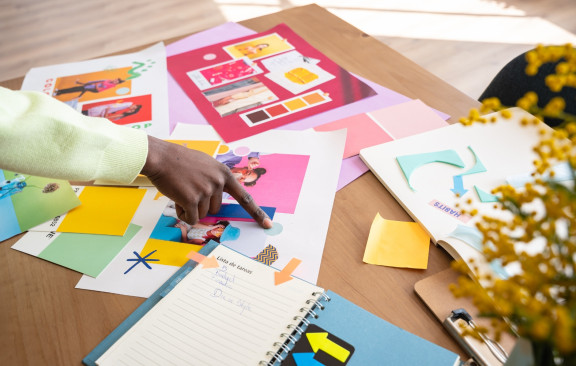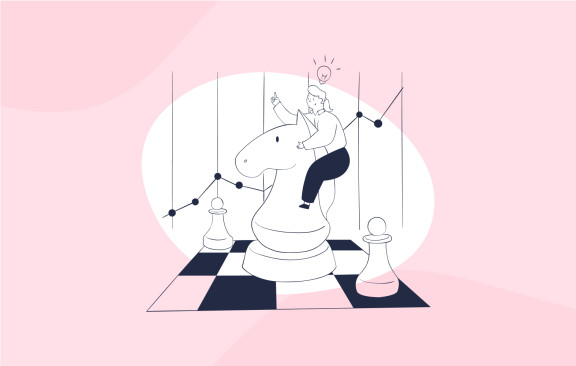In his seminal study on the impact of color on marketing, Satyendra Singh made the following statement: "People make up their minds within 90 seconds of their initial interactions with either people or products. About 62-90 percent of the assessment is based on colors alone."
That people take only 90 seconds to evaluate a person or product is amazing enough, but the fact that the overwhelming majority of this initial assessment is based on color alone is incredibly revealing. It's an ever-present feature in the lives of human beings all over the world, and its impact on base-level decision making is too often totally underestimated.
Have you ever wondered about the colors used in corporate logos? Why do both Coca-Cola and McDonalds (and countless others) incorporate a very vibrant red in their marketing campaigns? Can it be that these giant corporations are simply following tradition and are unaware of the psychology of their choices?
That's extremely unlikely, especially when you consider the copious amounts of money these giant companies spend on advertising and research. The conclusion is unavoidable: color matters.
So how can the average online retailer leverage this information to improve the shopping experience of his or her customers?
Let’s find out!
The theory behind color psychology
First, we need to analyze the theory behind color psychology so we can understand a few basic concepts.
In the first paper we're looking at — the interactive effects of colors and products on perceptions of brand logo appropriateness — Paul A. Bottomley and John R. Doyle discuss in great detail the terms "functional products" and "sensory-social products." In a nutshell, functional products are designed to solve a customer’s problems (toilet paper, dental floss, soap, solicitors, and so on). In contrast, social-sensory products fulfill the customer’s need for sensory pleasure and stimulation, as well as the need for self-identity and group membership (nightclubs, ice cream, perfume, and so on).
Furthermore, the study determined that functional colors (black, grey, green and blue) are deemed more appropriate for functional products than sensory colors (red, yellow, pink, purple) and vice versa. For example "the connotations of blue with sincere, dependable and trustworthy (Jacobs et al., 1991) appear relatively more salient to the fulfillment of functional (e.g. a bank) rather than sensory-social needs (e.g. a night-club)."

Why is This Important?
The research conducted by Bottomley and Doyle suggests that certain products are best combined with certain colors in regard to the motivation behind customer purchasing patterns. With this information in hand, you can immediately classify your product as either functional or sensory-social and as a result focus on optimizing the color layout on your store and on your products themselves.
Let’s use a hypothetical example: Jane sells women’s jewelry on her online store. Having done her homework, Jane knows that jewelry is a pure example of a sensory-social product. She will therefore avoid using functional colours such as blue, brown, green and grey on her store. Furthermore, Jane can incorporate sensory-social pinks, reds, purples and silvers in her marketing campaigns and on her products.
This may seem too trivial to be of real consequence. But the science is solid and it resoundingly states:
Color matters.
A breakdown of color
Let’s look at each color individually and see how it has been used in the past to elicit specific customer behavior.
Red

Red is arguably the most powerful color in the spectrum. It is associated with power, passion, love, heat as well as danger and anger. Red is the color of choice for some of the biggest corporations in the world, including McDonalds, Target, Kmart, Exxon and so on.
Red is heavily featured in fast-food restaurants because it has been shown to increase appetite. Red is also used in casinos: "Time seems to pass slowly and objects seem larger and heavier under a red light…Casinos take advantage of this principle — they use red color lighting to get their customers excited while making them feel that they are not wasting a lot of time in the casino."
Another important point: red stimulates arousal. This makes it the ideal color for "hot" products such as lipstick, sports cars, high heels and so on. It is NOT appropriate for "cooler" products, such as stereo systems, personal computers, family sedans and so on.
Blue

Blue is the polar opposite of red in terms of its effect on human behavior. Whereas red elicits a feeling of excitement and arousal, blue is calming and relaxing. A very interesting example of the powerful calming impact of blue can be found in the paper we mentioned at the beginning of this lesson, Sayendra Singh’s "Impact of Color on Marketing":
"…formal restaurants use blue color to calm and relax their customers. This comforting state is expected to increase the likelihood of the customers lingering longer. Longer stays may correspond to larger meals, more wine, coffee, or desserts, and; therefore, more sales."
Isn’t it fascinating that fast-food restaurants and high-scale restaurants make use of totally different color choices to achieve the same goal (increased profits)? The same is true for retail shopping: A study in 1992 established that shoppers prefer a blue retail environment to a red retail environment.
Why? Because shoppers found it relaxing, thereby "encouraging longer periods of browsing, and greater purchase intention."
Do you see a pattern here? If you want people to stay for longer periods of time on your website, use a calm blue theme. If you want to excite and arouse, go with a more vibrant color. Again, this choice between a calm ambiance and an exciting ambiance depends on your market and your product.
Yellow

Are you selling to a young crowd? Then yellow may be the perfect color choice for your online store.
Yellow is associated with feelings of warmth, optimism, happiness and youth. Although it does not elicit the same feelings of arousal as red, it is much friendlier and easier on the eyes.
It should be noted that the red and yellow colour combination is perhaps the most common in the entire spectrum. McDonalds, DHL, Shell, Chupa Chups, Burger King, Ferrari — all of these corporations understand that the vibrancy of red and the warmth of yellow make for an irresistible color pairing.
Orange

Orange is more playful than red or yellow. It screams cheer and demands attention. Think of the logos that feature orange as their predominant color: Nickelodeon, Hooters, Firefox, Fanta, Amazon. All of these organizations believe they have something special to offer, and they usually do!
As an online retailer, the downside to using orange in your marketing campaigns is that your store and your products must back up the bold claim suggested by your color choice. This is much harder to achieve than with all the other colors we've discussed.
Green
.jpg)
Now we come to one of the most interesting colors in the spectrum: green. Green is associated with peacefulness, growth, health and nature. This is why corporations such as BP and Starbucks have jumped on the green bandwagon — they want to be seen as "green" companies (i.e., environmentally friendly).
But green is also associated with greed and money. So be careful if you decide to use green in your online store, because it is very easy to get the wrong message across.
Neutral (Black and White)

Black and white (and the various shades of gray in between) also have an important place in color psychology. These neutral shades represent balance, calm and simplicity. Many newspapers and content-based websites — The New York Times and Wikipedia, for example — have intentionally chosen neutral shades to represent their organisations.
Why is this the case? Because certain organizations rely heavily on an image of impartiality. Can you imagine if the New York Times logo was bright red! What kind of a message would that send to the paper's sophisticated readership?
One interesting example that sidesteps this image is Apple. The Apple logo is a masterpiece of design simplicity. It projects confidence and calmness in a way that very few companies have been able to achieve. Mercedes-Benz is another example, as well as Nike. Neutral shades lend themselves to simple, yet confident, design.
The neutral shade is without doubt the hardest to get right. Unless you are a very talented designer (or if you can afford to hire one), stay away from the neutral shades.
Takeaway lessons

So what have we learned here? It should be clear by now that color psychology is relevant to even the smallest online retailer.
The most important lesson to take away from this is that color choice in business should be based on context. Red will have a completely different effect depending on the environment in which it is used. This means that you have to closely analyze your market, your product and your customers. Only then should you begin experimenting with different colors.
As always, start small. Change the color of one element in your online store. Split test the original page and the new page and see if there is a significant difference in conversion. Build slowly upon your discoveries and your online store will reaps the rewards.











